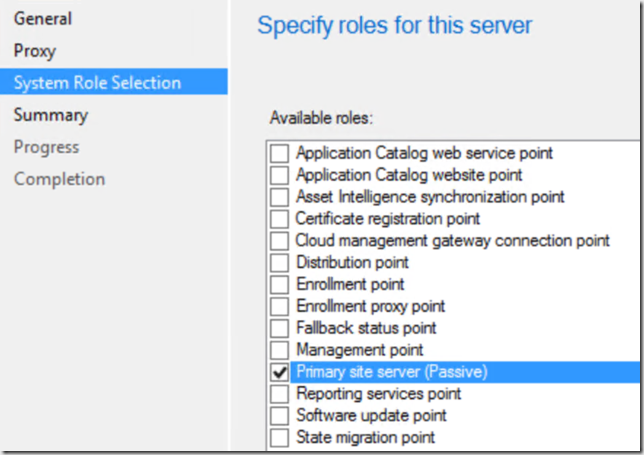Not sure if the ConfigMgr team ever sleeps, month after month new features are released in ConfigMgr Technical Preview. June is no exception, and I must confess this is truly the month I have been waiting for. Among many of the new features we now have support for active/passive site servers.
A passive primary site server adds fault tolerance to your site by creating a copy of your primary site server and keeping it in sync. If a disaster occurs, you can manually make the passive site server active.
There are a couple of things you need to consider before using the feature:
- The passive server will use the same SQL server, but not write anything to the database while being passive.
- The Active and Passive site servers must be in the same domain.
- SQL configuration can be default instance, named instance, SQL Server cluster, or an Always On Availability Group. Especially SQL always on is a perfect fit for this configuration.
- SQL database cannot be hosted on the primary site server.
- The provider can’t be installed on the passive server (or any other site system roles).
- Promoting a passive site server to Active is a manual process.
Design impact
As you read this post, you might realize that using this new feature will impact your site design. Most MVP’s that I know, highly recommend having SQL installed on the primary site server. With this feature hopefully making it into Current Branch, we must re-visit that recommendation. My advice, start looking into SQL Always on along with active/passive site servers. Another important change is the location of the provider. I would say that the majority have a single provider and it’s installed on the primary site server.
What is the benefit of this, is it worth the hassle? Absolutely, besides the obvious fault tolerance benefit, you know also have the opportunity the rename the primary site server. I know this has been a feature request for many, especially as we know have begun the move to Azure (where new naming standards often are part of the move). With this, install your passive site server in Azure, promote it from passive to Active and goal as achieved.
Have fun and being passive is the new Green – for more information check out https://docs.microsoft.com/en-us/sccm/core/get-started/capabilities-in-technical-preview-1706




I read on Twitter that the requirement “SQL database cannot be hosted on the primary site server” is only temporary for this Technical Preview and may go away.
Hi Christopher where have you read that on twitter , I am not able to find this
Thanks in advance